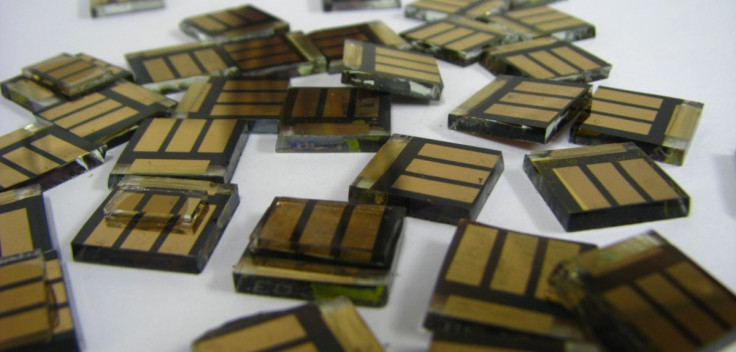Solar Cells Made Of Tin Are ‘Very Promising’ As A Low-Cost Alternative Energy Source

Proponents of sustainable energy in pursuit of a low-cost solar cell found relief in a widely available and cheap material: tin.
Researchers in both the U.S. and the U.K. are experimenting with tin as an alternative to lead in the production of perovskite solar cells, which convert light energy directly into electricity. Perovskite is a mineral composed mainly of calcium titanate whose structure is ideal for solar conversion. Most perovskite solar cell development has relied on lead to absorb sunlight, but the new studies, both released this week, make the case for using tin because it’s a less toxic material than lead.
“Tin is an inexpensive, abundant material and its use in solar cells would drive costs down while alleviating the kind of geopolitical supply chain issues that bedevil other solar cell materials,” Tina Casey, who writes about sustainability and new materials, notes in Clean Technica.
Solar panels are quickly becoming a global product. While the cost of solar panels varies widely, depending on their type and efficiency, overall, they’re becoming more affordable. According to Cost of Solar, solar panels are about half the price they were in 2000 and 100 times the price they were in 1977.
Today, solar costs about $0.70 to$0.73 per watt, although factoring in the “soft costs” of solar -- things like installation and obtaining permits -- can drive the prices up to about $4.72 per watt.
One of the studies focused on using tin in solar cells to drive down cost is from researchers at Northwestern University in Illinois. Their design for a new solar cell consists of five layers. The first two layers are of conducting glass and a layer of titanium dioxide. Then there’s the sheet of tin, followed by a coat of the electrical circuit. Finally, there’s a gold cap, which forms the back contact electrode of the cell.
"This is a breakthrough in taking the lead out of a very promising type of solar cell," Mercouri G. Kanatzidis, an inorganic chemist whose expertise is in tin, said in a statement. "Tin is a very viable material, and we have shown the material does work as an efficient solar cell."
Scientists in the U.K. have done similar experiments with using tin in perovskite solar cells and also report success with the material.
“The demonstration of solar cells using tin-based perovskites is a clear indication that good solar cell operation is not unique to lead, and therefore also opens up the use of other similar metals in the perovskite structure, leading to a multitude of new research avenues for optimizing these materials,” Henry Snaith, the lead author of a study published in the journal Energy & Environmental Science, said in a statement.
The one downside to using tin in lieu of lead in solar cells is less efficiency. The U.K. team reported that their prototype demonstrated about 6 percent efficiency at turning sunlight into electricity -- the U.S. team’s design achieved about the same -- but researchers believe with more development that the solar cells can reach an efficiency closer to 20 percent.
Leading solar cell technology has roughly 25 percent conversion efficiency, according to Gizmag.
© Copyright IBTimes 2024. All rights reserved.






















